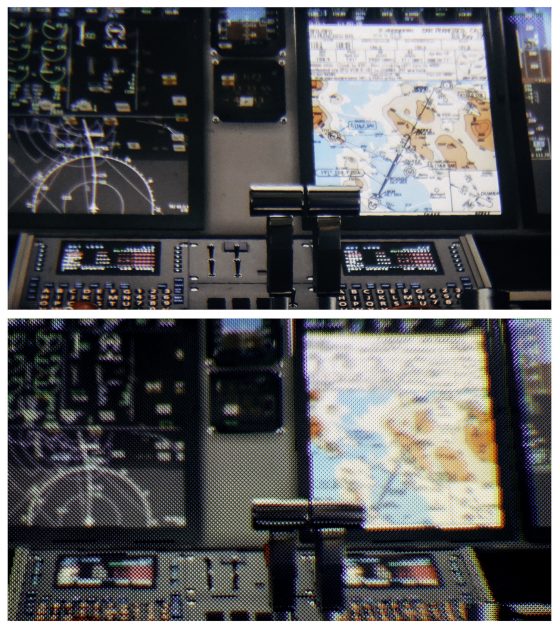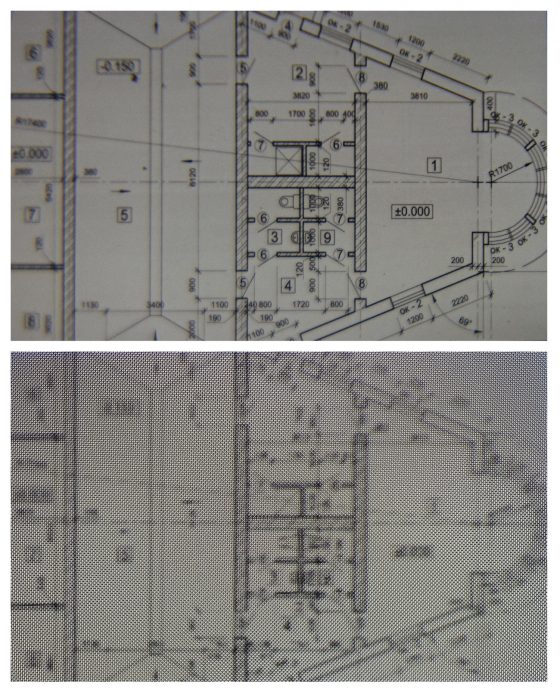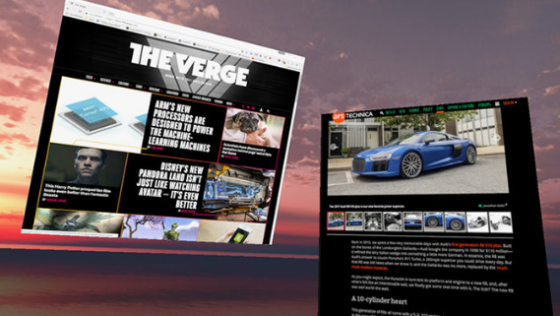The Finnish start-up claims resolution of 70x all current shipping and announced products. Product design and architecture are key early markets.

![]() Varjo — Finnish for “Shadow” — emerges from the shadows of stealth development today by announcing what it calls the first human eye-resolution headset for immersive display in virtual reality (AR). Today’s announcement is the first step in a series of upcoming Varjo-branded immersive computing products as well as a showcase for cooperative ventures with existing applications for design and other professional uses of high-resolution graphics.
Varjo — Finnish for “Shadow” — emerges from the shadows of stealth development today by announcing what it calls the first human eye-resolution headset for immersive display in virtual reality (AR). Today’s announcement is the first step in a series of upcoming Varjo-branded immersive computing products as well as a showcase for cooperative ventures with existing applications for design and other professional uses of high-resolution graphics.
The first Varjo device scheduled to ship later this year is a headset which Varjo says has resolution seventy times more powerful than current shipping or announced products, including Facebook Oculus, HTC Vive, Magic Leap, and others. Varjo is using patented technology that replicates how the human eye works, delivering what the company calls a “super-high-resolution image” to the user’s gaze direction. The new product will also use video-see-through (VST) technology giving it augmented and mixed reality (AR/MR) for unparalleled AR/MR capabilities.

Varjo says it is aiming this first product at professional users. “Varjo’s patented display innovation pushes VR technology 10 years ahead of the current state-of-the-art, where people can experience unprecedented resolution of VR and AR content limited only by the perception of the human eye itself,” said Urho Konttori, CEO and founder of Varjo Technologies. “This technology, along with Varjo VST, jump-starts the immersive computing age overnight – VR is no longer a curiosity, but now can be a professional tool for all industries.”
Coming out of the VR fog
Konttori says the resolution of existing virtual reality solutions is somewhere between “being not legal to drive and being legally blind. Everything looks like Lego pieces.” Using automotive styling as an example, Konttori says today designers cannot examine an entire car in real time in VR at the detail necessary for productive work. In conversations with a variety of design professionals, Konttori says they heard over and over that, VR will be useful but the resolution of today’s devices is not sufficient.

The team of 19 have experience in both hardware and software development at such companies as Microsoft, Nokia, Intel, Nvidia, and Rovio. The company is only 11 months old, but believes their experience and their technology makes their goal of a shipping product to key partners by year’s end is realistic.
One of the sample uses of Varjo technology we were shown in our interview was using a 2D CAD drawing of a floor plan. Using Varjo’s pass-through technology it becomes possible for an architect or a construction worker to see both a construction detail drawing and the building site at the same time. Resolution and pass-through vision are both key in this example. The CAD drawing must be as readable as a paper copy, something not possible on existing technology. The pass-through part allows the immersive device to show both the drawing and the room. Varjo controls the entire view, but allows reality to co-mingle with imagery. “We control the entire field of view,” says Konttori.
Varjo uses a controlled field of view to allow fast computation of the immersive images. Only the two degrees of view the eye looks directly at is served at full resolution. When the eye moves in the object, the full resolution moves along. Konttori claims the system runs at approximately 20ms latency, in line with existing systems but doing so at much higher resolution.
The first devices to ship before year’s end will go to key developers, who will not be revealed by the company until they ship. Konttori expects the price of the first generation product will be “like a professional monitor… something a freelance CAD consultant can afford.”
What do we think?
Varjo is targeting professional use of xR, a wise move if they deliver on their promises of utility in mixing the real and the virtual. At first they will ship a hardware product, but the long term plan is to work with software developers in CAD and related design disciplines. The solution as presented does not make extreme demands on the GPU, allowing third party developers to focus matching their applications to the technology without having to worry about resolution issues. Konttori says trying to match professional graphics applications to existing xR technology is a case of “writing for the half blind.” He claims the industry has been working under an expectation that eye-resolution quality in xR is 5-10 years away. “We give them a new path for development, one where they can show the full detail.”
Right now the company is focused on getting the hardware and the resolution issues right. The addition of complementary technologies such as hands in the VR field of vision or taking special advantage of such GPU-based technologies as physically based materials or global illumination will come later.
What Varjo envisions will have application beyond design. Finance industry people could read their Bloomberg displays in total privacy instead on big screens where others can see. Automotive style designers will be able to look at their models in 3D in real time to look how curves blend and merge, something today’s xR devices cannot offer beyond a pixelated view.
The pedigree of the development team is sound, the ideas well defined. If they can execute on the schedule they announced, demand will be brisk once the third-party network comes on board.






